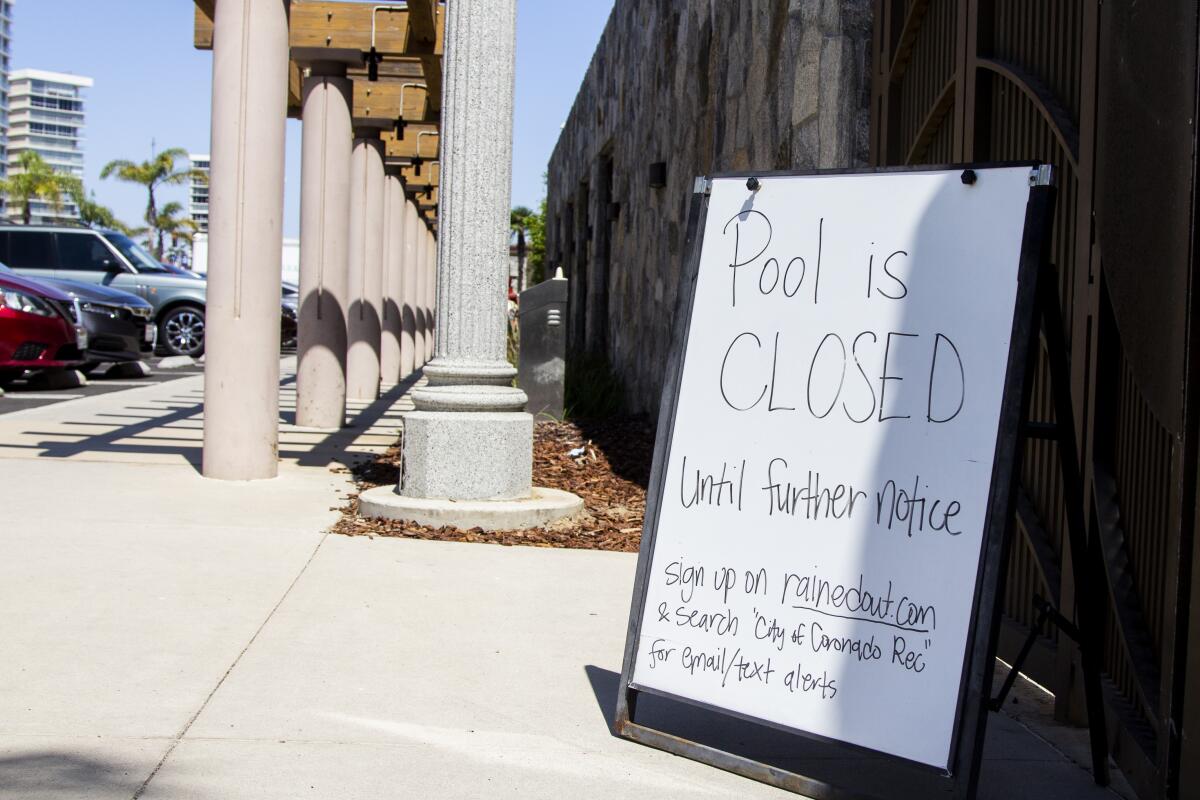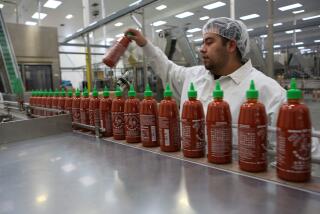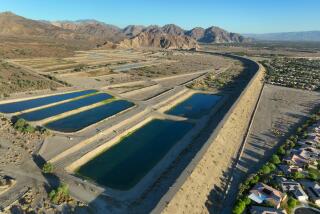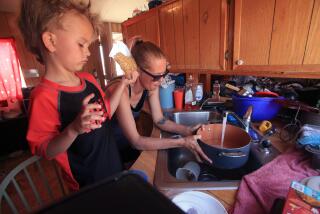Nationwide chlorine shortage shuts down San Diego County pools

SAN DIEGO — A nationwide chlorine shortage is putting a damper on those pool parties and swim lessons San Diego County residents pined for during the COVID-19 pandemic.
The scarcity of the chemical has closed some public pools and forced others to reduce operations. Most recently, Coronado shuttered its pools until further notice, saying it has received little to no supply to keep both its competition and recreational pools open at the Aquatics Center.
“There is a nationwide chlorine shortage and it’s kind of been ongoing, but it’s really hitting home,” said Roger Miller, director of Coronado’s Recreation and Golf Services.
The city uses about 500 to 600 gallons of chlorine a week to treat an estimated 100,000 gallons of water to keep its pools operational. Last week, Coronado received a shipment of only 300 gallons, Miller said.
“At this point in time, we cannot keep the water quality where we need it to be so we’ve closed the pools and they will remain closed until we either get a full delivery or we can secure an alternative source of chlorine,” he said.
Across the county, public pools have either shut down or canceled certain activities, citing the national chlorine shortage. Several YMCA locations in the region, including the South Bay Family branch in Chula Vista, have closed their spas, while others, such as the Cameron Family site in Santee, have temporarily closed their recreational pools, according to notices posted on the organization’s website.
The undersupply comes as Oceanside prepares to open the El Corazon Aquatics Center, the city’s largest aquatics facility with a 50-plus meter competition pool, instruction pool and splash pad. Although the city’s pool supplier has made officials aware of the chemical shortage, “we have not had an issue thus far and our plan is still on,” said Mark Olson, Oceanside’s Parks and Recreation division manager.
Legoland and Vista’s Wave Waterpark, which have a number of water rides and attractions, have not been affected by the shortage, spokespeople for the parks said.
“We continue to work with our supply vendors to ensure that we will not be impacted in the future,” Legoland spokesperson Jake Gonzales said.
SeaWorld did not respond to requests for comment.
Low chlorine supplies are mainly tied to a chemical fire that destroyed chlorine manufacturer BioLab’s facility in Louisiana after Hurricane Laura’s landfall in August 2020, leaving two other domestic companies, Clearon and Occidental Petroleum, to step up to the high demand. BioLab officials said in May the company is still producing chlorine tablets and supplying them to its retailers while rebuilding its facility for an expected 2022 reopening.
“Unfortunately, there may be times when retailers do not have adequate supply on the shelves. We are actively working to rebuild our plant that was severely damaged by Hurricane Laura and improving the supply chain during the next 12 months,” BioLab President Jon Viner said in a statement.
The pandemic also played a big role in the shortage, Miller said.
“With the pandemic and everyone being at home, people were using their pools and the higher the heat, the quicker chlorine burns off,” he said. “There were also a lot of above-ground pools that were purchased, which require chlorine. And, of course, there’s chlorine and bleach. Bleach products were being used by people that wanted to sanitize surfaces. So there’s just been a tremendous amount of demand.”
Miller said he expects to see additional pool closures and chlorine price increases. This summer, chlorine prices are expected to rise 70% compared with last year, according to data firm IHS Markit.
The high demand has also led to sale adjustments at supply stores. In the Chula Vista location of pool supply retailer Leslie’s, fewer shipments have arrived, which has forced the store to impose quantity restrictions, said store manager Andrea, who declined to provide her last name.
“I’m seeing pool guys I’ve never seen before because they can’t go to their supplier because they don’t have chlorine either,” Andrea said.
Employees at Alpha Water Systems in La Mesa said there is also a workforce shortage within the swimming pool industry, with fewer drivers returning to work to make deliveries.
BioLab officials said the shortage is temporary, but in the meantime, people can take a number of steps to get the most out of their pools when they encounter a chemical scarcity. The company’s top recommendation is to use pool chlorinating liquid as a fast and convenient option to keep the recommended chlorine residual of 1 to 4 parts per million in the water, as well as frequent testing and the use of an algaecide to avoid algae growth.
“One gallon of chlorinating liquid is equivalent to dosing your pool with two of the traditional 8-ounce chlorinating tablets,” David Rouse, BioLab vice president of research and development, said in a statement. “Just be sure to use chlorinating liquid intended for pool care, as it contains a higher concentration of the active ingredient, sodium hypochlorite, than common household bleach. You should be able to find these products at mass, DIY and pool retailers.”
Murga writes for the San Diego Union-Tribune.
More to Read
Sign up for Essential California
The most important California stories and recommendations in your inbox every morning.
You may occasionally receive promotional content from the Los Angeles Times.











